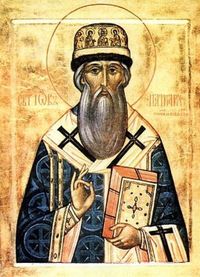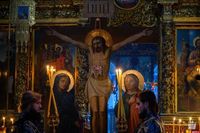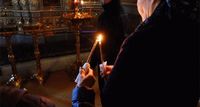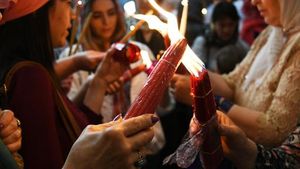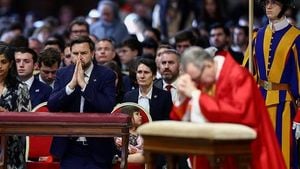On April 18, 2025, Christians around the world observe Great Friday, a solemn day steeped in reflection and mourning as they commemorate the crucifixion of Jesus Christ. This significant occasion falls within Holy Week, the final week of Great Lent, and is marked by a series of religious services and traditions that emphasize the gravity of the day.
According to Christian tradition, Great Friday, also known as Good Friday, is a time of deep sorrow. It recalls the events leading to Jesus’ condemnation and crucifixion, which took place on April 3, 33 AD. The day is not merely a historical recollection but a profound spiritual experience for believers. As the Gospel recounts, following the Last Supper, Jesus was arrested and brought before the religious authorities who ultimately decided to condemn Him to death.
On this day, the Orthodox Church honors numerous saints and martyrs, including the martyrs Agafopod and Feodula, as well as St. Iov, the Patriarch of Moscow and All Russia, whose relics were transferred in 1652. The observance of Great Friday is not just about remembering the suffering of Christ but also about engaging in a spiritual journey that connects believers to the transformative events of history.
The church service on Great Friday is characterized by a strict observance of fasting. Traditionally, the Divine Liturgy is not celebrated, and the faithful are encouraged to fast, consuming only water and a small amount of bread. This practice is seen as a way to participate in the sufferings of the Savior and to reflect on the significance of His sacrifice. The church calls for a day spent in silence and contemplation, avoiding any form of entertainment or celebration.
As part of the services, a special ceremony occurs at three o'clock in the afternoon, marking the hour of Jesus’ crucifixion. During this time, clergy carry the Shroud, a symbolic cloth representing the body of Christ, and place it in the center of the church. Believers are invited to venerate the Shroud, bowing in prayer and reflection. This moment is one of the most poignant traditions of Great Friday, enveloped in a sense of sacredness and reverence.
In the evening, a procession takes place with the Shroud, and congregants hold lit candles, symbolizing the light of Christ even in the darkness of His suffering. This act of carrying candles home and placing them before icons is a cherished practice among Orthodox Christians, reinforcing the connection between the sacred and the domestic.
Great Friday is also a day steeped in cultural beliefs and customs. In Russian folklore, it is said that the first person seen through the window on this day foretells one's fate for the year. A man is a sign of good health, while seeing an old woman is considered a warning of impending trouble. If a family is seen, it symbolizes harmony and understanding within the home.
Moreover, the day is often associated with various weather-related beliefs. For instance, rain on Great Friday is thought to predict a warm and fruitful summer, while clear skies may suggest a dry season ahead. Many people believe that water collected on this day possesses healing properties, prompting them to gather it for future use.
In 2025, a rare occurrence happens as both Orthodox and Catholic Christians celebrate Easter on the same day, April 20. This alignment is infrequent due to the different calendars used by the churches—Orthodox Christians follow the Julian calendar, while Catholics adhere to the Gregorian calendar. The coincidence of Great Friday on April 18 serves as a reminder of the shared faith and traditions that unite Christians across denominations.
Reflecting on the significance of Great Friday, the church emphasizes the importance of repentance and forgiveness. Believers are called to refrain from conflicts and negativity, fostering an atmosphere of peace and introspection. This day is not merely about mourning but also about preparing the heart for the joy of Easter, the celebration of Christ's resurrection three days later.
As the church encourages a full engagement with the spiritual essence of Great Friday, it also invites believers to connect their personal experiences with the larger narrative of Christ’s passion. The events of this day are a powerful reminder of the sacrifices made for humanity, prompting believers to reflect on their own lives and the call to live in accordance with Christ’s teachings.
In conclusion, Great Friday stands as a cornerstone of the Christian faith, encapsulating themes of sacrifice, reflection, and hope. As believers gather in churches, their hearts united in prayer, they commemorate not just the crucifixion of Jesus, but also the profound love and redemption that His sacrifice represents. This day, marked by silence and solemnity, ultimately leads to the joyous celebration of Easter, a testament to the victory of life over death.
